The hybrid cloud model, which has long been the strategic goal for most enterprises, has exposed a fundamental flaw in traditional IT: the storage infrastructure. For decades, storage has been managed in discrete, vertical silos. An array is provisioned for a specific workload, a different solution is adopted for cloud, and a third is used for container-native applications. This hardware-centric approach creates operational friction, inefficient resource utilization, and inconsistent data governance. The modern enterprise does not need more hardware to manage; it needs a unified, software-driven environment to manage its data.
This imperative is the driving force behind the “Enterprise Data Cloud,” a paradigm that reimagines storage with a single, intelligent control plane that abstracts the underlying hardware. The purpose of this model is to deliver a consistent data experience and automated management across all resources, whether on-premises, in the public cloud, or in a hybrid configuration. Pure Storage presented at Cloud Field Day 24, outlining their strategy and its implications for modern IT operations. You can watch all the Pure Storage presentations on the Tech Field Day website.
What is the Enterprise Data Cloud?
The Enterprise Data Cloud is an architectural approach that shifts the focus from managing individual storage arrays to managing a unified fleet of data resources. It pools all storage (file, block, and object) across on-premises and cloud environments, virtualizes those resources, and provides a single, automated control plane for data management. This stands in sharp contrast to legacy systems. The traditional model is characterized by manual, ticket-based provisioning, where workloads are tied to specific physical hardware. The modern data experience, in contrast, is defined by three key attributes:
- Software-Defined: A unified operating environment provides a consistent set of data services (e.g., data reduction, snapshots, replication, encryption) across all environments.
- Unified Management: A single intelligent-automation layer that federates all resources, enabling a self-service and API-driven platform.
- Consumption-Based: The model moves from a capital-expenditure (CapEx) cycle of procuring hardware to an operational-expenditure (OpEx) model where the enterprise consumes storage as a service, governed by defined SLAs.
Pure Storage’s strategy for delivering this vision is built on three distinct, yet integrated, pillars: the Purity data plane, the Evergreen One consumption model, and the Pure Fusion control plane.
The Core Components of the Pure Platform
To execute the Enterprise Data Cloud, the architecture cannot be a simple rebranding of existing tools. It requires a foundational restructuring of how storage is delivered and managed.
First is Purity, the unified data plane at the heart of the platform. Purity serves as the software-defined operating environment that runs across the entire Pure portfolio, from the on-premises FlashArray and FlashBlade to the Pure Storage Cloud. This is the mechanism that ensures consistency. By providing a single set of services for block, file, and object storage complete with built-in data resilience and cybersecurity features, Purity decouples the data services from the physical hardware. An application gets the same data-reduction, encryption, and protection capabilities regardless of where its data physically resides.
Second is Evergreen One, which functions as the platform’s consumption model. This is the “as-a-service” component. In this model, Pure Storage takes responsibility for meeting specified performance and capacity SLAs, including ransomware protection. For the enterprise, this effectively eliminates the burden of hardware procurement and management. It provides the financial and operational elasticity of the public cloud for the entire hybrid environment, allowing IT to scale resources without disruption.
Finally, Pure Fusion is the intelligent automation layer that binds the platform together. If Purity is the “what” (the data services), then Fusion is the “how” (the automation). Fusion is the unified control plane that federates the entire fleet of arrays into a single, logical pool of resources. It is this component that enables the true, self-service, and outcome-driven data management promised by the Enterprise Data Cloud.
Pure Fusion: Automating Outcomes Across the Fleet
The technical execution of the Enterprise Data Cloud hinges entirely on the capabilities of its control plane. Pure Fusion, now in its second iteration, is engineered to provide this intelligent automation. A key concept introduced by Fusion is the “fleet.” Instead of IT administrators managing dozens of individual arrays, Fusion federates all FlashArray, FlashBlade, and Pure Storage Cloud instances into a single, unified fleet. This abstraction is critical. It allows management to shift from individual boxes to the entire data estate as a whole.
The primary mechanism for this is “Presets,” declarative, outcome-driven definitions for workloads. A storage administrator or consumer no longer needs to write a complex script detailing how to provision storage—selecting the array, configuring volumes, setting replication, and applying snapshot policies. Instead, they simply define the *desired outcome* in a Preset. For example, a “Production-Database” Preset might specify an IOPS requirement, a disaster recovery RPO/RTO, and a specific encryption level.
When a user requests storage using a preset, Fusion automatically provisions and configures the workload to be compliant with the defined settings, placing it on the most appropriate resource in the fleet. This streamlines operations, enables safe self-service for junior administrators or application teams, and dramatically reduces the risk of misconfiguration. Internet connectivity for management is not mandatory; Fusion supports “dark site” customers by integrating the control plane directly into Purity, removing the dependency on cloud connectivity for core automation.
Who Needs This Cloud Integration Solution?
The most pressing challenge for enterprises today is not managing the on-premises datacenter; it is taming and integrating the public cloud. Native cloud storage often forces a trade-off: organizations gain agility but lose the enterprise-grade data management, resilience, and cost-efficiency they depend on. This leads to rising costs, data sprawl, and operational complexity.
This is the problem the Pure Storage Cloud portfolio is designed to solve. By extending the Purity data plane into the public cloud, Pure delivers its enterprise features—such as advanced data reduction (thin provisioning, deduplication, and compression), high availability, and non-disruptive upgrades—natively within hyperscaler environments.
The Pure Storage Cloud Azure Native Service is a significant development in this area. This is not simply a virtual appliance; it is a native service built in partnership with Microsoft that integrates seamlessly into the Azure portal. Customers can provision and manage Pure Storage as a native Azure resource, scaling performance and capacity on demand. This integration provides a unified data plane for simplifying hybrid deployments, enabling cost-effective disaster recovery to the cloud, and optimizing performance for cloud-based applications.
Pure’s approach resolves the core fragmentation of the hybrid cloud. It enables an organization to utilize a single, consistent, SLA-driven storage platform for all its data, ultimately fulfilling the promise of a true Enterprise Data Cloud.

